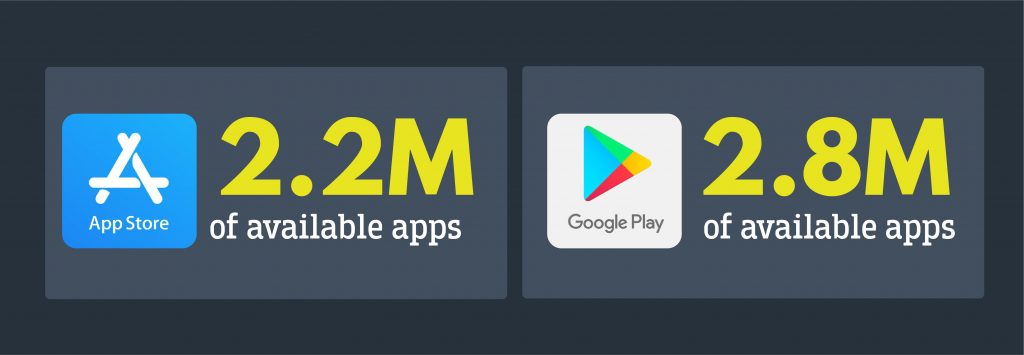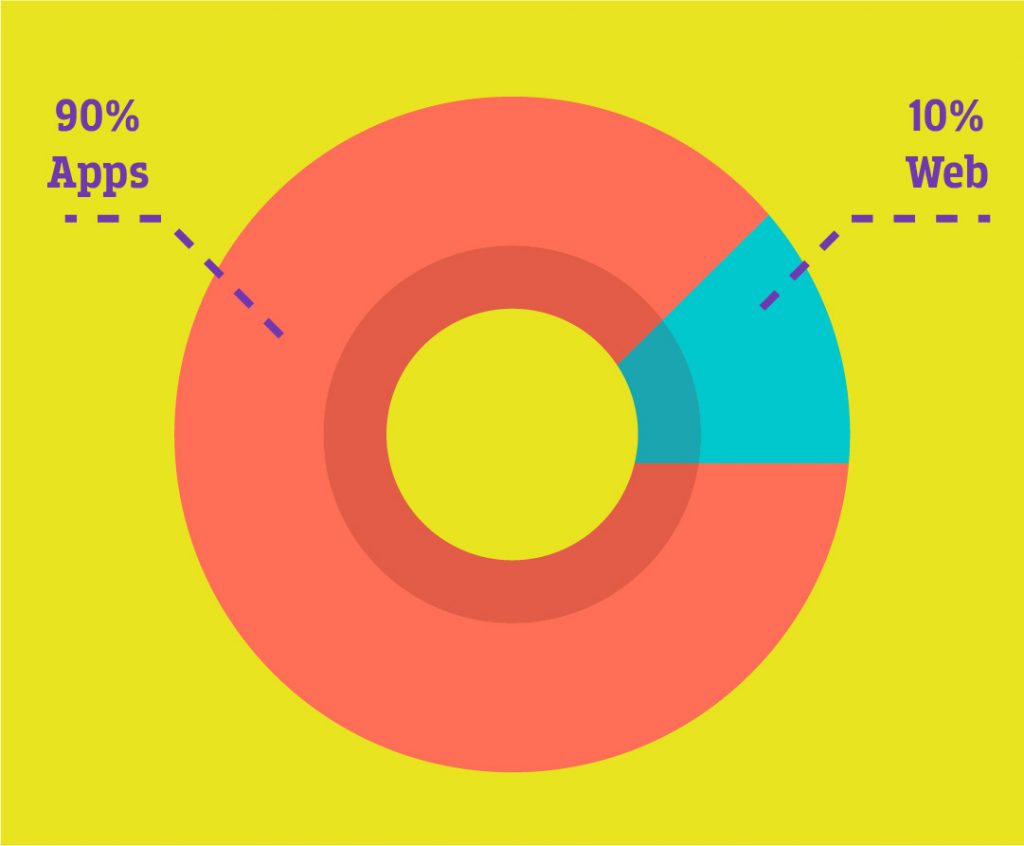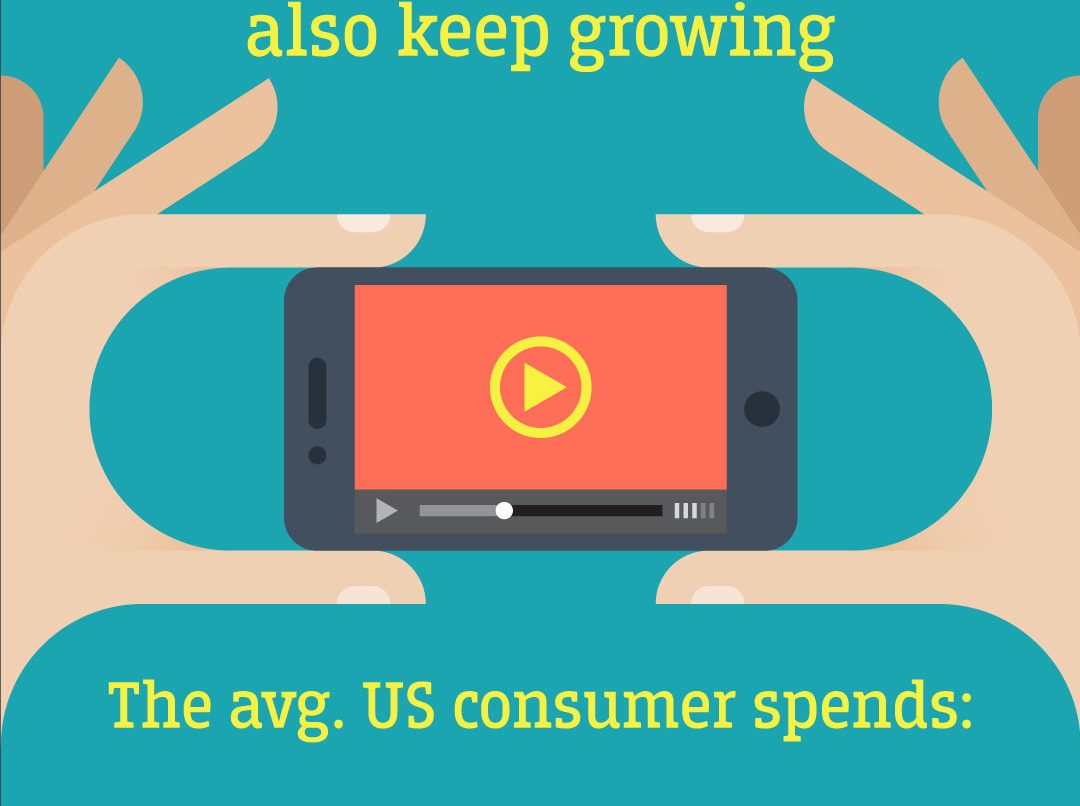More than 50% of the world’s population owns a smartphone and most of these people use apps they have downloaded. Moreover, app usage and smartphone penetration are still growing at a steady rate, without any signs of slowing down in the near future. In fact, according to eMarketer, worldwide mobile ad spending will hit $402 billion in 2023. Are you going to miss the mobile in-app opportunity?

App users visit, on average, 3 times more pages per session than mobile web users. This is mainly because the mobile app user experience is superior to mobile web for content and for advertising. In fact, in 2022 85% of mobile ad dollars were spent on mobile in-app inventory. Many US media buyers are already shifting their spend.
The facts don’t lie
The average American checks their phone every 12 minutes. 10% of people do it once every four minutes and 90% of mobile time is spent on apps. These are powerful reasons for in-app advertising to keep growing.
- The Apple App Store has 2.2 million apps available for download.
- There are 2.8 million apps available for download on the Google Play Store.
- 21% of Millennials open an app 50+ times per day.
- 49% of people open an app 11+ times each day.
- 57% of all digital media usage comes from mobile apps.
- The average smartphone owner uses 30 apps each month.

Improving viewability and transparency
App-ads.txt and in-app header bidding, as well as the IAB’s Open Measurement SDK, improved viewability and transparency, key issues in the industry. These 2019 initiatives along with 5G will certainly continue to boost in-app mobile ads.
The market also now includes video, outstream, and native formats, all of which improve experience because the ads can tap into the native features of smartphones. This level of innovation and the ability of in-app advertising to leverage device IDs are important factors. They allow a higher level of personalization and targeting accuracy.
These are all factors that clearly contribute to the changes we are experiencing. The best example is probably the retail industry. The cookie restrictions in web environments are increasingly pushing marketers and advertisers toward in-app advertising. The restrictions are triggering evolution.
Speeding up the shift from online to offline

Covid-19 accelerated this shift from offline to online and also the growth of in-app advertising. Since mobile apps are basically immune to ad blocking, this type of advertising presents many advantages.
The average US consumer spends more than three hours a day on mobile apps – 42 minutes of this with mobile video. These are good reasons for budgets in video advertising to shift away from web browsers to in-app.
OTT video is here to stay
This trend is global. Over 2bn users will watch videos on mobile devices (mostly in-app) this year and mobile video reached 79% of mobile data traffic by 2022.
OTT video is here to stay. The industry is still working on issues such as data privacy, but advertisers should not miss the in-app opportunity.
Why is mobile in-app advertising important?
Almost 60% of digital media usage comes from mobile apps, this provides a great opportunity to advertise to a large part of the population.
What are some in-app mobile trends?
Gaming, OTT video and better viewability and transparency are some of the trends that have increased in popularity during the pandemic.










